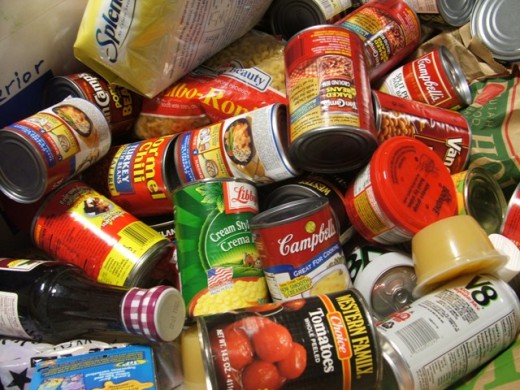
The giving season is well and truly upon us. Canned food drives are launching, volunteer lines are growing, and we’re even talking on social entrepreneurship. ‘Tis the season to give.
Despite the abundance of good intentions, it’s worth remembering that giving is more complex than just cutting a check and feeling good about it. Before you write that check or rush off to your local homeless shelter, here are a few giving guidelines to consider.
Think first, give second
While it’s easy to label the charitable spirit as uniformly “good,” most causes reflect complex problems with unclear solutions. Canned food drives, a mainstay of holiday giving, are a fitting example. It seems obvious: hungry people need food. Why not address that need with the canned food that we (the sympathetic well-to-do) possess in droves?
Unfortunately, the reality behind most canned food drives isn’t so simple. The majority of donated food is either unusable (expired) or unappetizing. It’s the canned crap we scrounge from the corners of our pantries and the year’s unwanted leftovers that we conveniently part with. It’s not a solution that addresses the root causes of hunger. It doesn’t even address temporary needs: most food pantries need facilities, vehicles and staff, not the food itself.
So why do we donate food (or used clothes, or used toys)? Is it for “a good cause”? Or is it for ourselves? (Reflective silence please.)
To be clear, the point isn’t “don’t support canned food drives” or “don’t donate used clothing.” It’s to think through solutions before you support them.

Give money, not things
Donating food, clothing, or some other tangible “thing” is an attractive proposition because you control what you’re giving. It’s nice to know you’ve sent a jacket to a kid in need: that feels good. Your money, time and effort wasn’t squandered. A kid is warm.
Unfortunately, donating “things” is a pretty inefficient way of creating change. Again, consider canned food drives. It’s estimated that food banks can purchase 20 times the amount of food per dollar wholesale as can individual donors buying cans from the grocery store. Not only that, but food banks can use monetary donations to budget for an entire year, not just the holiday season, and they can pick and choose the food they serve to clients. It may not feel as good (or get rid of that Spam in your pantry’s corner) but it’s more meaningful.
If you really want to contribute material items, check and see if the program you’re supporting has a wish list of specific items they’re looking for, and purchase them in bulk. Also, try and support programs that let clients “shop” for the donated items: this allows clients more choice, control and dignity.
Be picky
As much as we wish it weren’t true, charities aren’t created equal. Methods differ, staff differs, results differ: donations don’t compare between organizations. That’s fact.
The savvy holiday giver should support top charities with proven track records and a need for more funding. Luckily, there are thousands of such organizations around, at local, national and international levels. You can find them yourself – look around you. Who’s creating change? Who do you trust? Dig deep: research their financials on Guidestar, talk with their staff about their work, review any “success metrics” they offer. You might find something you love.
Of course, if that’s wayyyy too much work, there’s plenty of services that provide recommendations. Check out Charity Navigator for financials-driven reviews and “top 10” lists, or GiveWell for qualitative, in-depth analysis. There’s a lot of good going on. You can support it.

Keep doing it!
Giving during the holidays is great, but the good fight doesn’t end with New Years. This year, why not keep giving? It’ll feel good and you’ll support long-term change. Might have to eat some Spam though. ;)
Also, don’t forget about Thursday’s event on social entrepreneurship. We’ll be using #rethinksocial to talk about it on Twitter. Be there.
Get the TNW newsletter
Get the most important tech news in your inbox each week.




